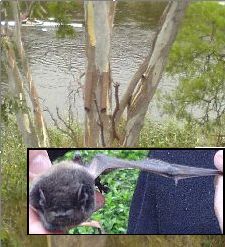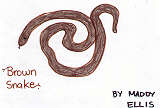
SWAMP WALLABY
Wallabia bicolor
A swamp wallaby appeared on the island in March 2004 staying for a week or so. It had been sighted coming down the Yarra river corridor, and presumably swam to the island. It is not known where it went after it left the island.
Swamp wallabies are Australia's only wallabia species, found on the eastern coast of Australia, introduced to New Zealand and offshore islands. Their habitat is dense undergrowth in forest woodland and heath throughout eastern Australia.
They are about 700 mm high when sitting on their haunches and their tails are also 700mm long. They weigh up to 17 kg. Fur is dark brown with lighter belly and chest.
Illustration by Jazzmin Jarman








